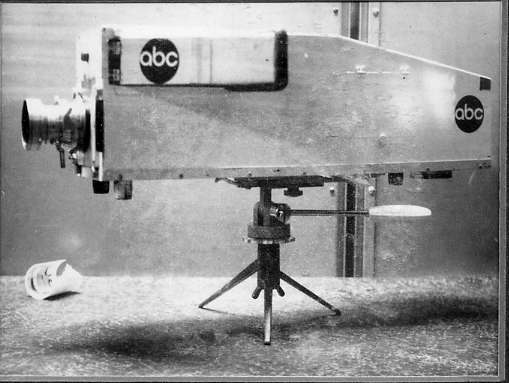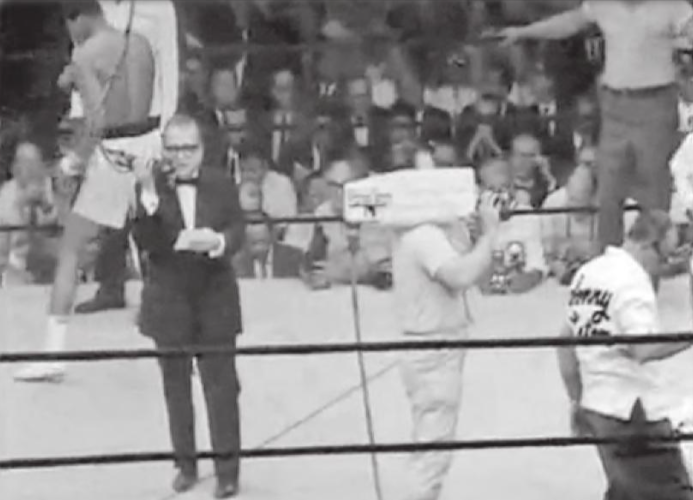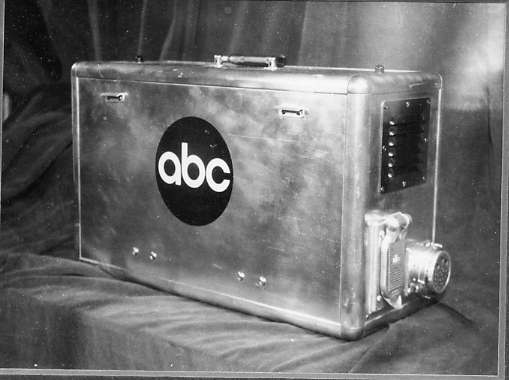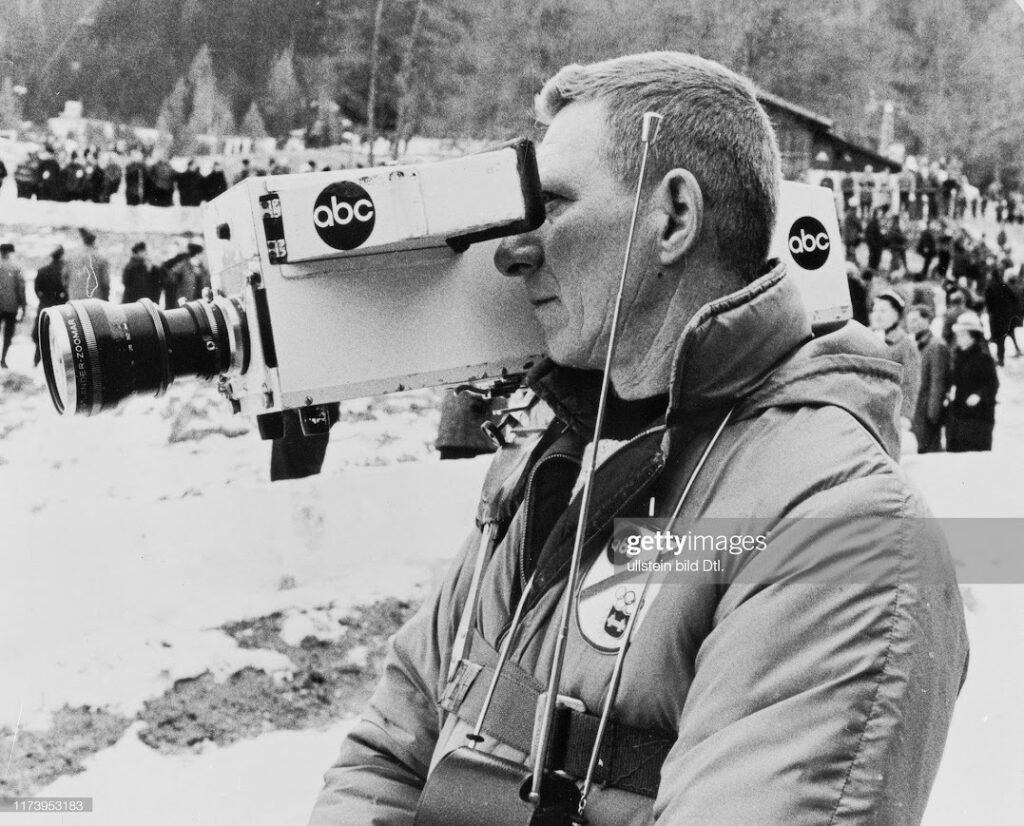

The Surprising History of ABC’s First Handheld Cameras…LA vs. NYC
About six months ago, I met a character named Joe Maltz somehow. Turns out that in 1961, Joe was the Supervisor of Engineering Maintenance for ABC in New York and had a GREAT STORY to tell! In a nutshell, Joe was put in charge of developing a handheld camera that was better than the one the engineers at ABC Prospect in Los Angeles had just developed.
To set the stage and I need to add some history for perspective, broadcast history and ABC west coast and east coast history. First, the broadcast history; in 1950, NBC had built the first handheld camera, two years before RCA introduced their version (1952) and both were Vidicon cameras. By 1956, RCA had developed a wireless version of the camera and they were used at the political conventions that year and had once been used on the sidelines at a football game in New York state, but only that one time for some reason. FYI, CBS engineering head Dr Dan Flaherty was working with Ikegami on a handheld camera too and the first known used of it was in February of 1962 during the Mercury flights at NASA.
On the ABC Los Angeles history side: Roone Arledge had just been hired (1960) and his job was to get ABC more deeply involved in sports broadcasting, and HE DID! Inside the company, managers began trying to forecast what kind of new technology would be needed and at ABC Prospect in Los Angeles, an engineer named Don McCroskey had an idea. He wanted to build a handheld camera using a full-size Image Orthicon tube. As luck would have it, he had two retired GE PC 7 Image Orthicon cameras on the lot, and they were the sacrificial lambs that would supply the parts for two portable cameras. Aiding Don were engineers Dean Cannon, Bob Bleiwiess and Jerry Buchi who helped refine the camera.
Below is Jim Angel behind one of the GE cameras testing the tubes before they were wheeled into the Prospect lot’s engineering garage for surgery…they were having their yokes “transplanted”.

Below is ABC’s first handheld cameraman Mike Friedman, one of their TOP operators for years before this photo was made of him shooting Jim McKay for WIDE WORLD OF SPORTS. Mike went on to directing on WIDE WORLD.

Below is ABC’S first portable camera “demonstrated” by our great friend DON “PEACHES” LANGFORD, who, as a firsthand witness to this history, also contributed to this article. Oh, and the bald wig Don is wearing is a tribute to his boss, Mike Friedman, who sported the look many years before it was a “thing.”

Below is a 2016 photo of Don Langford with the camera he used in the mid 1960s at ABC, the one you see him with in the photo above. When the two cameras were retired in the 70s, ABC LA manager Robert Trachinger made sure they were not lost to history and these two are still in his care.

Below is one final photo of the Los Angeles version in use in 1963 at The University of Virgina.

NOW TO THE EAST COAST ABC HISTORY AND THE “ABC PRESS ORTH CAMERA” DEVELOPMENT. Below is a photo of that rarity.

When Joe Maltz began to tell me about this, he kept mentioning the “press orth” and I had no idea what he was talking about, so I finally asked him what a press orth was. To my surprise he said that was the name of the camera! TWO EVEN BIGGER SURPRISES came when I was on the phone with Don “Peaches” Langford in LA fact checking this article. 1st, When I told him about the press orth name, he said “Yeah, that’s what we called ours too, but we were first, and New York just added the city name to the Press Orth name.” 2nd, their first press orth in LA was cabled directly the carcass of one of the GE cameras, minus the viewfinder! That must have been an odd sight. There was 50 feet of cable between the new camera head (basically the GE’s yoke assembly) and the old camera head with 50 more feet of cable to the truck. On their second version, they managed a better workaround. Oh, and Peaches did know Joe Maltz as he had covered many events in NYC too. I love to be amazed!
Here is part of the story Joe Maltz told me:
The engineers at ABC’s Los Angeles operation had, in order to give the cameraman more maneuverability, created a small hand-held camera by separating the television pickup tube assembly from the bowels of a GE television camera, extended the cable harness, added an optical viewfinder and created what I believe was ABC’s first broadcast hand “hand-held” camera. The “Creepy-Peepie”, as it was dubbed, was tethered to the carcass of the camera by the cable harness.
There were two problems. The concept was great, but the quality left much to be desired. The second problem was, considering the rivalry between the ABC East Coast and West Coast operations, the “Creepy-Peepy” was an NIH (Not Invented Here) creation. The New York Operations Group was jealous. This situation had to be rectified.
During this period, I was the Supervisor of Engineering Maintenance in New York. I had the reputation of being an innovator. Merle Worster, the Director of Technical Operations for the East Coast, asked me if I could come up with New York alternative for the Creepy Peepy. I agreed and did some research as to what would be required for a suitable hand-held camera. The unit had to have the following features:
- Light enough to be easily carried and operated by a single cameraman.
- The camera cable had to be extended to at least 200 feet and had to be able to operate with a 200-foot cable
- An electronic viewfinder would be required.
- The operating controls had to be easily accessible.
- The electronics would have to be compatible with the existing Camera Control Units.
After six weeks of design and construction, with the help of Harold Gordon and Bill Wagner, the camera, with all of the above features was used for the first time on an ABC Wide World of Sports television program. I dubbed the camera, the “New York Press Orth”.
I designed the NY version and Harrold Gordon built it. The electronic viewfinder was created from CRT tube from Philco Safari portable TV with tube facing front of camera with 2 bending mirrors for the eyepiece. Interior of both (2 units built in NYC) cameras were made of TK31 parts as many were smaller than the TK30 components. – Joe Maltz
Below are pictures Mr Maltz sent that show some of the features of the camera and showing it in action…this first image is at the Liston–Clay fight (Ali had not yet changed his name from Cassius Clay), on February 25, 1964 in Miami Beach, Florida.

Here is the shoulder harness that became a real necessity as soon as the camera was tested.

And finally, this is the auxiliary unit for the ABC Press Orth camera.

Below is one of the NYC Press Orths in use at the 1964 Olympics in Innsbruck
